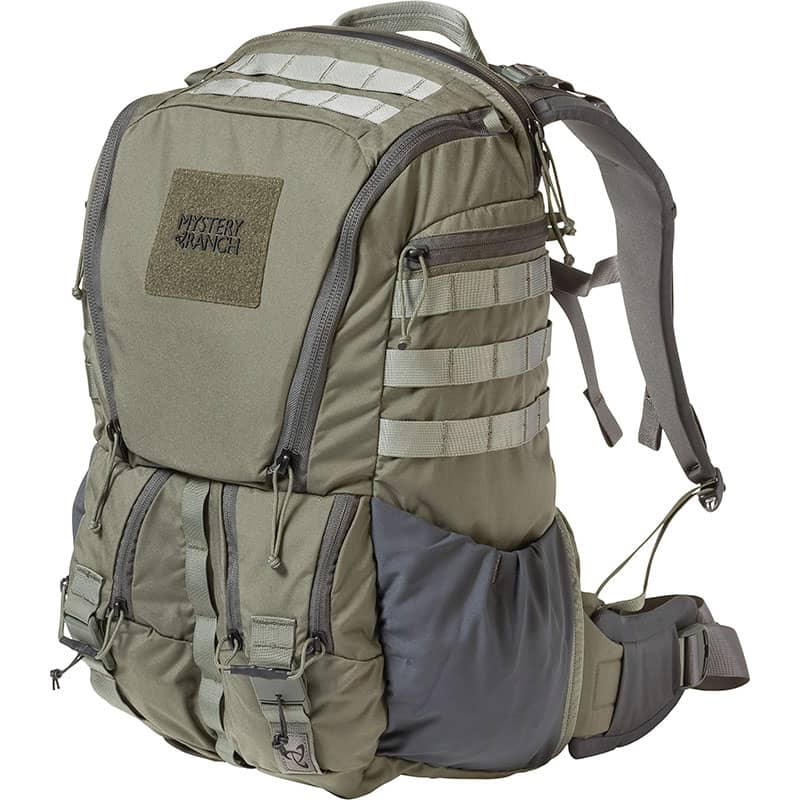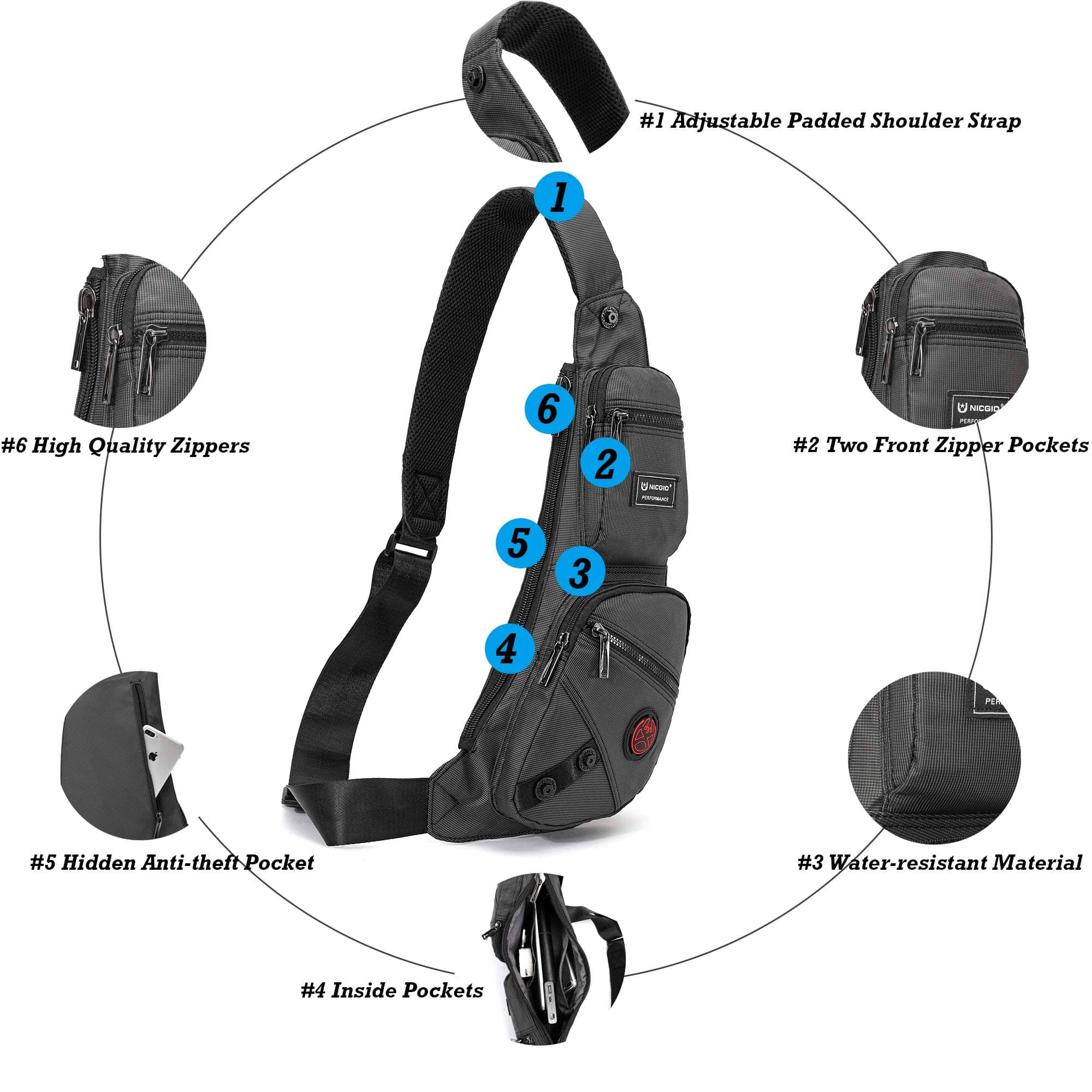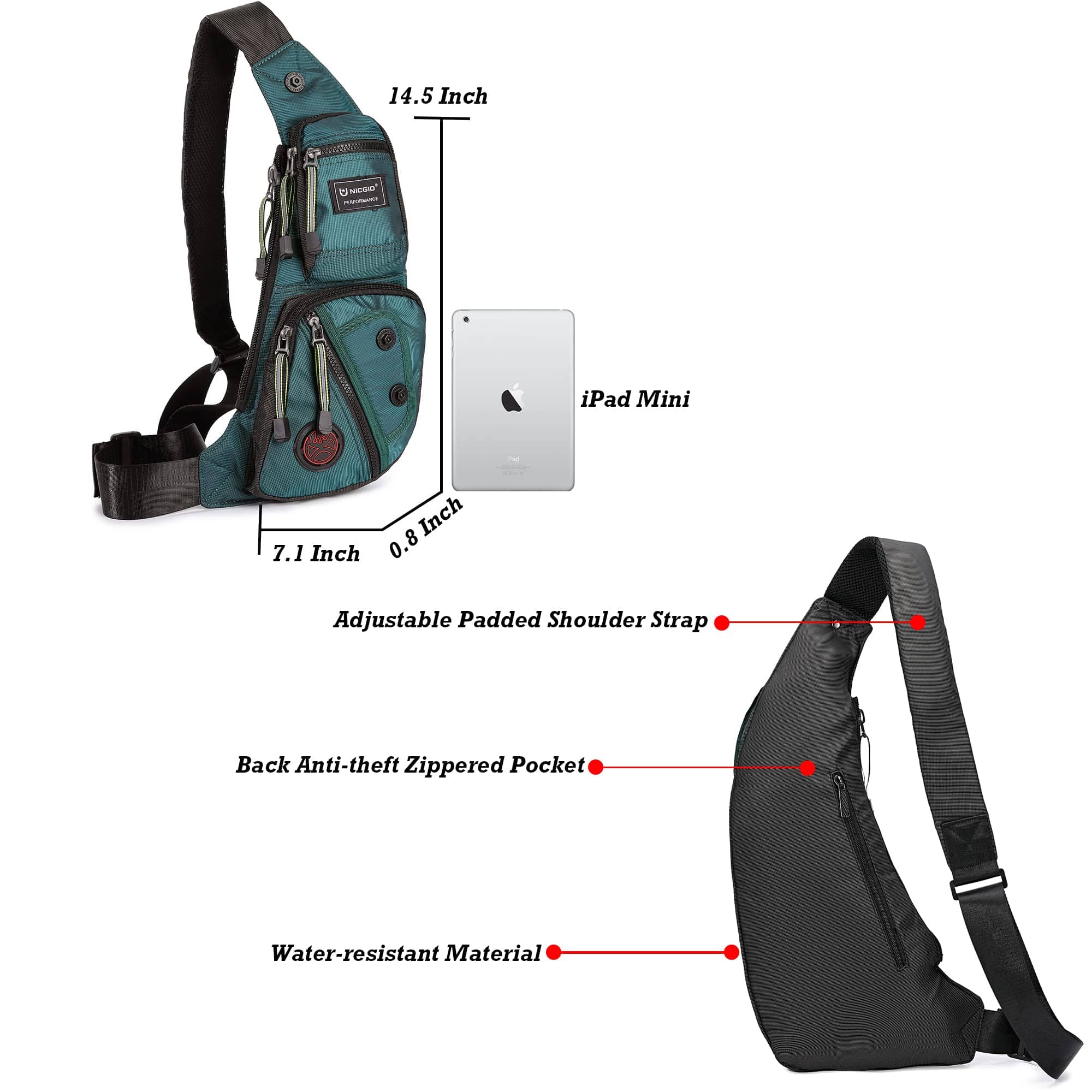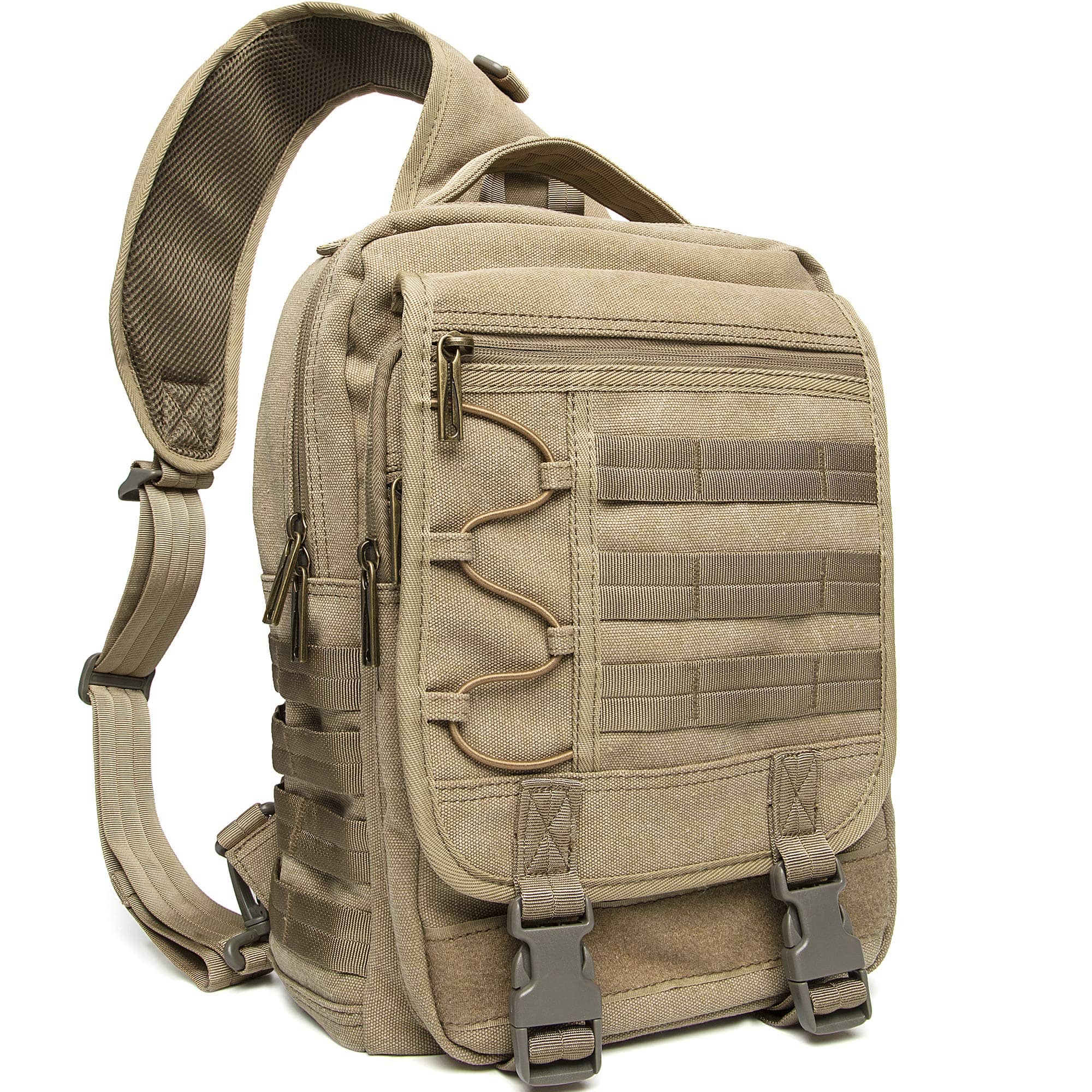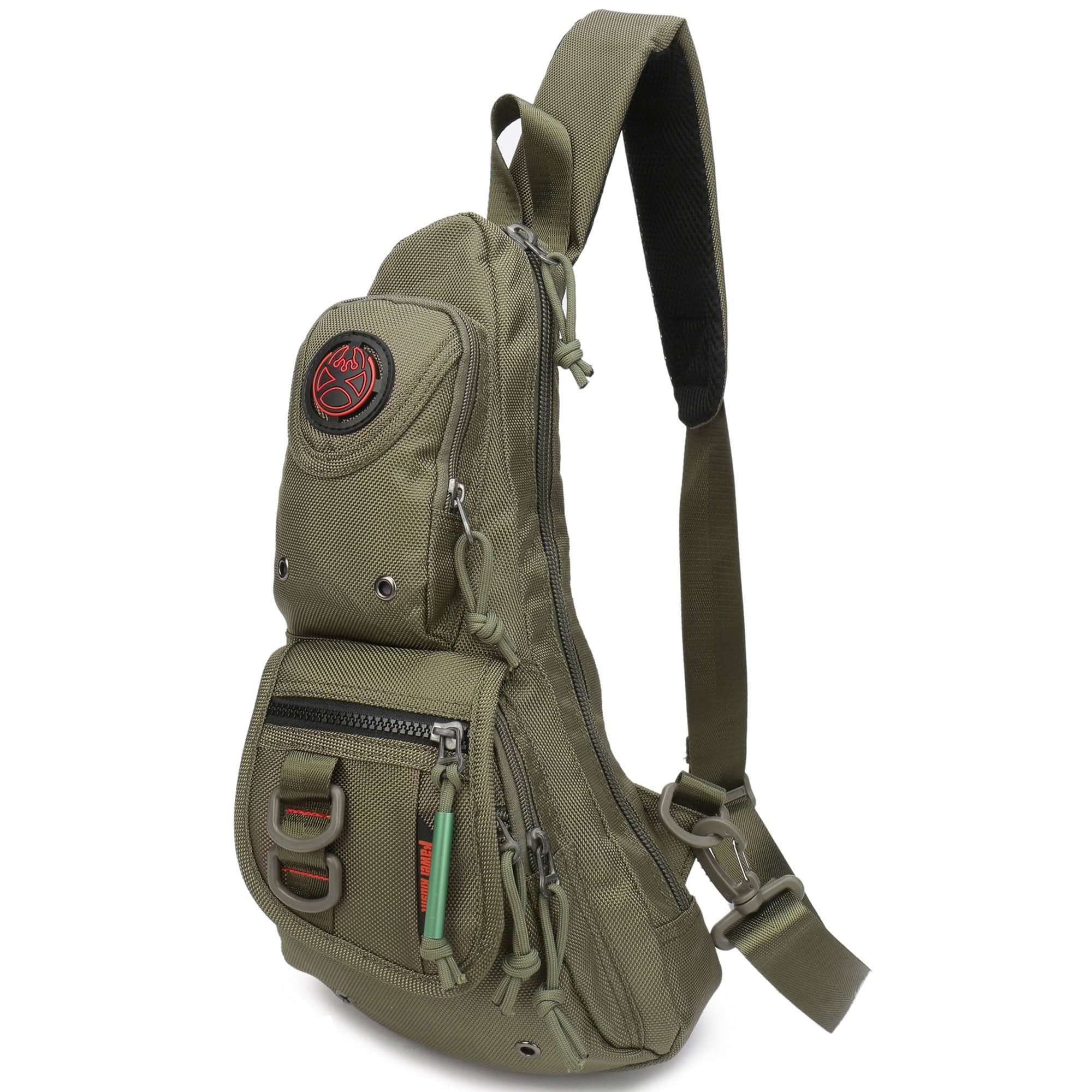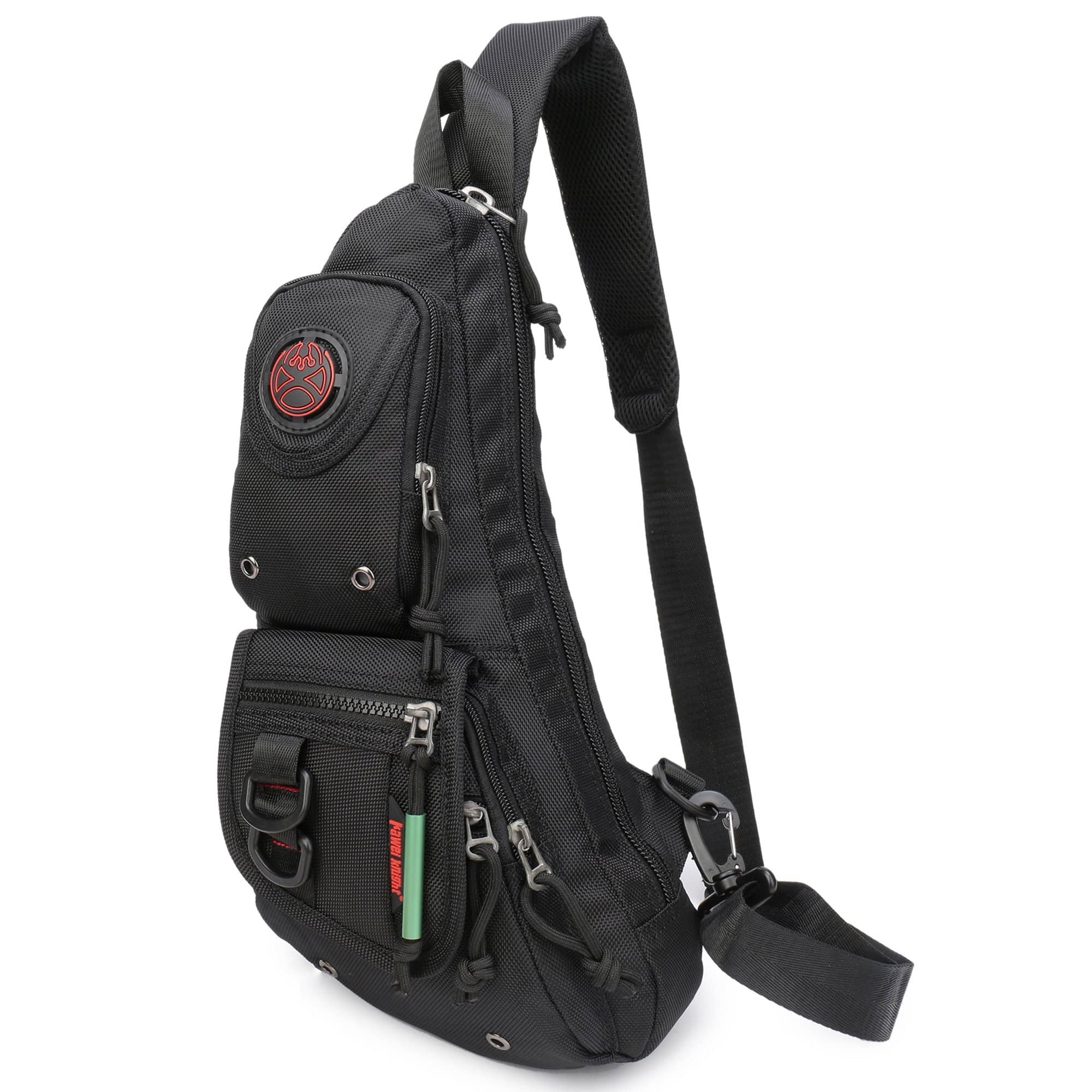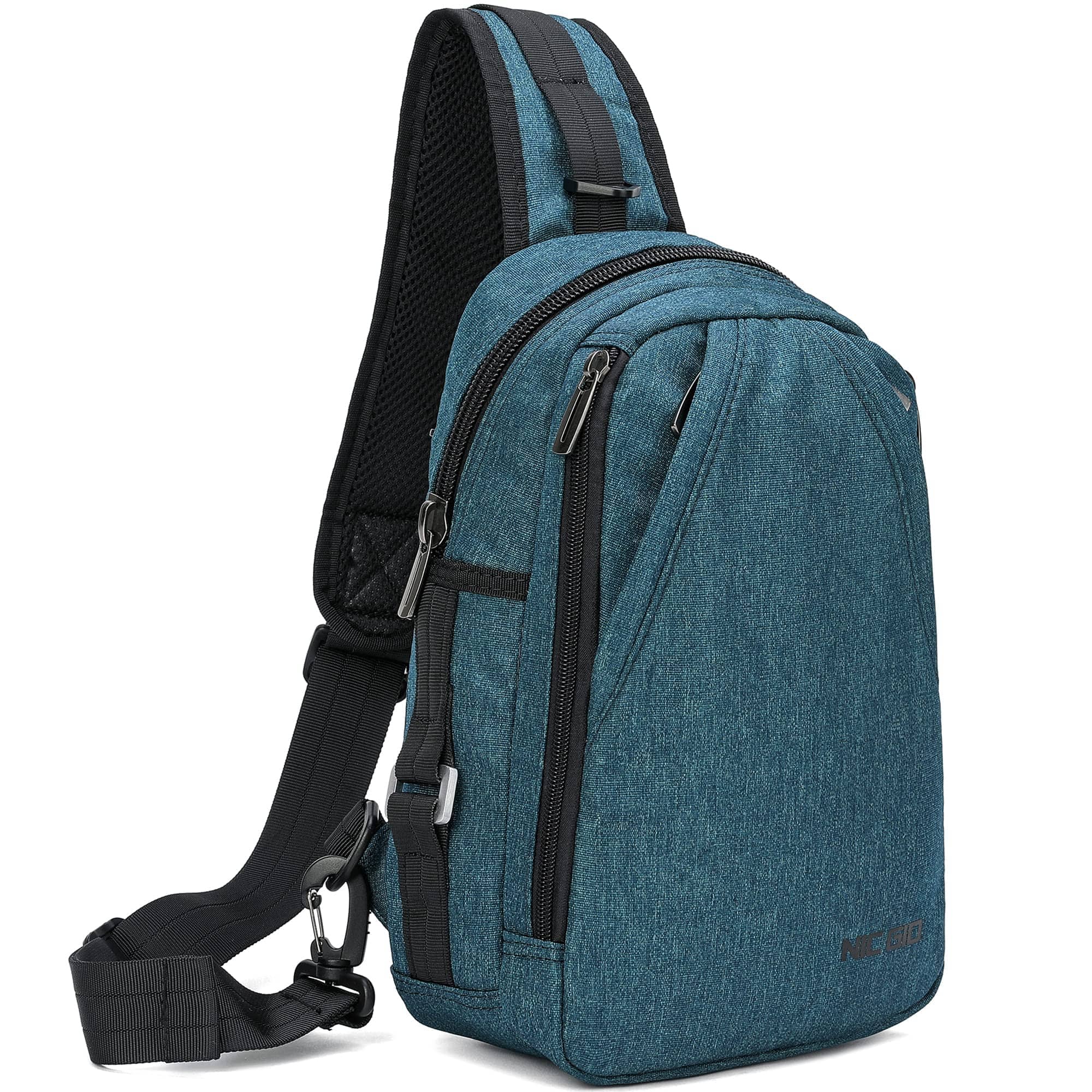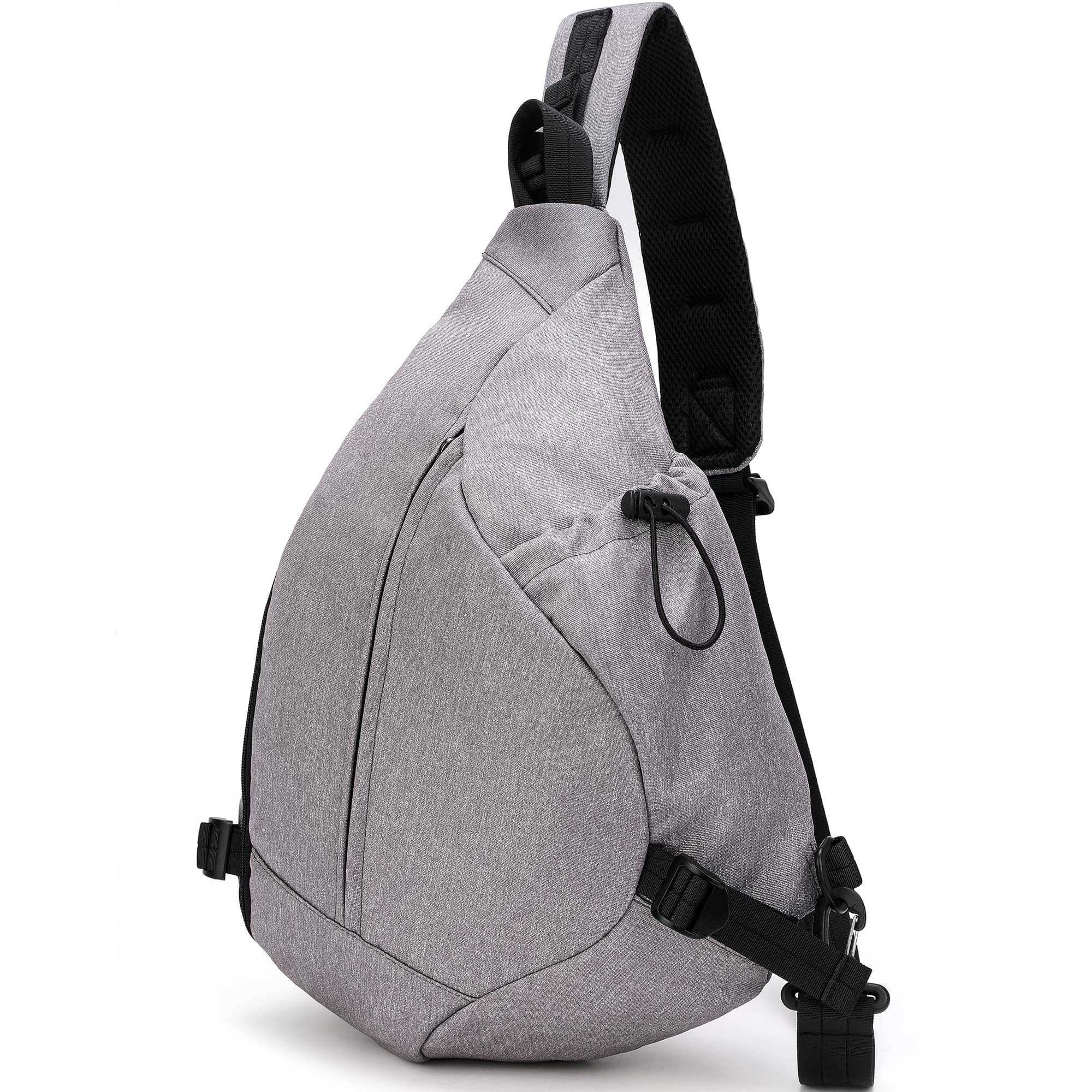Welcome to the ultimate guide for outdoor adventurers seeking the best ruck backpack. Whether you’re a seasoned hiker, camper, or traveler, finding the perfect backpack is essential for a comfortable and organized journey. With countless backpack options on the market, it’s easy to feel overwhelmed. But fear not, because we’ve done the research for you.
In this comprehensive guide, we will delve into the factors to consider when choosing a ruck backpack and provide you with expert tips to find the ideal one for your needs. From assessing the capacity and weight to evaluating durability and comfort, we’ve got you covered. We’ll also explore different types of backpacks, their features, and how to properly fit one for optimal weight distribution.
Whether you’re embarking on a day hike in the mountains or heading out on a multi-day backpacking trip, having the right ruck backpack can make all the difference. So join us as we navigate the world of backpacks and help you find your perfect match.
Get ready to pack up and hit the trails with confidence. Let’s dive in!
Table of Contents
What is a ruck backpack?
A ruck backpack, also known as a rucksack, is a type of backpack designed specifically for outdoor activities such as hiking, camping, and backpacking. Unlike traditional backpacks, ruck backpacks are typically larger in size and offer more storage space. They are designed to distribute weight evenly across your back, making them more comfortable to carry for extended periods.
Ruck backpacks often feature a top-loading design, allowing you to access your gear easily. They also come with various compartments and pockets to help you stay organized on your adventures. Additionally, ruck backpacks are made from durable materials that can withstand the rigors of the outdoors, ensuring that they last for years to come.
When choosing a ruck backpack, it’s important to consider factors such as capacity, weight, durability, and comfort. Let’s explore these factors in more detail.
Factors to consider when choosing a ruck backpack
1. Capacity
The capacity of a ruck backpack refers to the amount of gear it can hold. The capacity is usually measured in liters and can range from small daypacks with 20-30 liters to large expedition backpacks with 70+ liters. When determining the right capacity for your needs, consider the length of your trips and the amount of gear you typically carry. Keep in mind that having extra space is always a good idea for unexpected situations or if you plan on carrying additional items such as camera equipment or extra layers of clothing.
2. Weight
The weight of a ruck backpack is an important factor to consider, especially if you’ll be carrying it for long periods or over challenging terrains. Look for a backpack that strikes a balance between durability and weight. Lightweight backpacks are ideal for those who prioritize speed and agility, while heavier packs may offer more durability and features but can be more cumbersome to carry.
3. Durability
Durability is crucial when it comes to outdoor gear, and ruck backpacks are no exception. Look for backpacks made from high-quality materials such as nylon or polyester, which are known for their durability and water resistance. Reinforced stitching, sturdy zippers, and strong hardware are also indicators of a durable backpack. Remember, investing in a durable backpack will save you money in the long run as you won’t have to replace it frequently.
4. Comfort
Comfort is key when it comes to carrying a ruck backpack, especially on long hikes or multi-day trips. Look for backpacks that offer adjustable shoulder straps, padded hip belts, and a well-ventilated back panel. These features will help distribute the weight evenly and reduce strain on your shoulders and back. Additionally, consider the shape and fit of the backpack to ensure it suits your body type.
With these factors in mind, let’s explore the different types of ruck backpacks available.
Different types of ruck backpacks
1. Daypacks
Daypacks are small-sized ruck backpacks designed for day hikes or shorter outdoor adventures. They typically have a capacity of 20-30 liters, making them perfect for carrying essentials such as water, snacks, extra layers of clothing, and a small first aid kit. Daypacks are lightweight and often feature hydration bladder compatibility, allowing you to stay hydrated on the go.
2. Overnight backpacks
Overnight backpacks, also known as weekend backpacks, are designed for overnight trips or short backpacking adventures. They offer a larger capacity than daypacks, usually ranging from 30-50 liters. Overnight backpacks can comfortably hold a sleeping bag, tent, cooking gear, clothing, and other essentials needed for a night or two in the wilderness.
3. Expedition backpacks
Expedition backpacks are the largest type of ruck backpacks and are designed for multi-day or extended backpacking trips. They typically have a capacity of 70+ liters and can hold all the gear you’ll need for extended periods in the outdoors. Expedition backpacks often come with features such as detachable daypacks, multiple access points, and external attachment points for carrying additional gear.
Now that you have an understanding of the different types of ruck backpacks, let’s explore the features to look for when choosing one.
Features to look for in a ruck backpack
1. Multiple compartments and pockets
Look for a ruck backpack with multiple compartments and pockets to help you stay organized. Having separate compartments for your sleeping bag, cooking gear, clothing, and accessories will make it easier to find what you need without having to unpack everything. Additionally, external pockets are useful for storing frequently accessed items such as water bottles or snacks.
2. Compression straps
Compression straps are an essential feature of ruck backpacks as they help secure and stabilize your load. These straps allow you to tighten the backpack, reducing bulk and preventing your gear from shifting during your outdoor activities. Compression straps also help maintain balance and improve weight distribution.
3. Rain cover
A rain cover is a valuable feature, especially if you’ll be venturing into wet or rainy environments. Look for a ruck backpack that includes a built-in rain cover or has a designated pocket to store one. The rain cover will protect your gear from getting wet and keep it dry during unexpected downpours.
4. External attachment points
External attachment points, such as daisy chains or gear loops, are handy for securing additional gear to the outside of your backpack. This is particularly useful for items that you need quick and easy access to, such as trekking poles, a sleeping pad, or a wet rainfly. Make sure the backpack you choose has enough attachment points to accommodate your specific needs.
Now that you know what features to look for, let’s explore some of the top brands for ruck backpacks.
Top brands for ruck backpacks
1. Osprey
Osprey is a renowned brand in the outdoor industry, known for its high-quality backpacks and innovative designs. Their ruck backpacks are highly durable, comfortable, and feature-rich. Osprey backpacks often come with adjustable suspension systems, ventilated back panels, and a wide range of sizes and capacities to suit different needs.
2. Deuter
Deuter is a German brand that has been producing backpacks for over a century. Their ruck backpacks are known for their excellent craftsmanship, durability, and ergonomic designs. Deuter backpacks often feature adjustable shoulder straps, padded hip belts, and a variety of organizational pockets and compartments.
3. Gregory
Gregory is another reputable brand that specializes in backpacks for outdoor adventures. Their ruck backpacks are designed with comfort and functionality in mind. Gregory backpacks often come with advanced suspension systems, customizable fits, and high-quality materials that can withstand rugged environments.
These are just a few of the top brands for ruck backpacks. It’s important to choose a brand that aligns with your specific needs and preferences. Now that you know what to look for and some top brands to consider, let’s move on to how to properly pack a ruck backpack.
How to properly pack a ruck backpack
Properly packing your ruck backpack can make a significant difference in your comfort and overall experience on the trails. Follow these steps to ensure you pack your backpack efficiently and optimize weight distribution:
1. Start by laying out all your gear and organizing it into categories such as clothing, sleeping gear, cooking gear, and accessories.
2. Place the heaviest items closest to your back, towards the center of the backpack. This will help maintain balance and prevent the backpack from pulling you backward.
3. Use packing cubes or stuff sacks to keep your gear organized and compact. This will make it easier to find items and prevent them from shifting during your hike.
4. Fill any empty spaces or gaps in your backpack with lightweight items such as sleeping pads or clothing. This will help prevent your gear from shifting and optimize weight distribution.
5. Use the compression straps on your backpack to tighten and secure your load. This will reduce bulk and keep your gear stable while you’re on the move.
By following these packing tips, you’ll be able to maximize the space in your backpack and ensure a comfortable and balanced carry. Now let’s move on to the essential items you should pack in your ruck backpack.
Essential items to pack in your ruck backpack
When venturing into the outdoors, it’s important to pack the right gear to ensure your safety, comfort, and enjoyment. Here are some essential items you should pack in your ruck backpack:
1. Navigation tools
Carry a map and compass, or a GPS device, to help you navigate through unfamiliar terrain. Make sure you know how to use these tools effectively before heading out.
2. First aid kit
A well-stocked first aid kit is essential for any outdoor adventure. Include items such as bandages, gauze, adhesive tape, antiseptic wipes, pain relievers, and any personal medications you may need.
3. Shelter
Depending on the duration of your trip, pack a tent, hammock, or bivy sack to provide shelter from the elements. Make sure you also have a sleeping bag and sleeping pad for a comfortable night’s rest.
4. Food and water
Pack enough food and water to sustain you throughout your trip. Consider lightweight and high-calorie options for fueling your body. If you’ll be hiking in areas with water sources, bring a water filter or purification tablets to ensure safe drinking water.
5. Clothing and layers
Pack appropriate clothing for the conditions you’ll be facing. Include base layers, insulating layers, and outer shells to protect you from the elements. Don’t forget to pack extra socks, a hat, and gloves for added warmth.
6. Fire-starting tools
Carry a lighter, waterproof matches, or a fire starter to help you start a fire for warmth, cooking, or signaling in case of an emergency. Make sure to follow local regulations and practice Leave No Trace principles when using fire.
7. Multi-tool or knife
A multi-tool or a knife can come in handy for various tasks such as cutting rope, preparing food, repairing gear, or building emergency shelters. Choose a tool that is lightweight and versatile.
8. Headlamp or flashlight
Having a reliable light source is essential for any outdoor adventure, especially if you’ll be hiking or camping overnight. Pack a headlamp or flashlight with extra batteries to ensure you can see in the dark.
These are just a few of the essential items you should pack in your ruck backpack. Customize your pack to suit your specific needs based on the duration and type of outdoor activity you’ll be engaging in. Now that you know what to pack, let’s move on to ruck backpack maintenance and care.
Ruck backpack maintenance and care
Taking care of your ruck backpack is essential to ensure its longevity and functionality. Follow these tips to keep your backpack in top condition:
1. Clean your backpack regularly
After each trip, clean your backpack by wiping it down with a damp cloth or sponge. Remove any dirt, dust, or stains. If necessary, use a mild detergent or specialized cleaner recommended by the manufacturer. Rinse thoroughly and allow it to air dry.
2. Store your backpack properly
When not in use, store your backpack in a cool, dry place away from direct sunlight. Avoid storing it in a compressed state, as this can damage the structural integrity of the pack.
3. Repair any damage promptly
Inspect your backpack regularly for any signs of wear and tear, such as loose stitching or frayed straps. Repair any damage promptly to prevent further deterioration. Many manufacturers offer repair services or provide replacement parts if needed.
4. Keep your backpack dry
While ruck backpacks are often made from water-resistant materials, it’s still important to keep them dry whenever possible. Use a rain cover or pack your gear in waterproof stuff sacks to protect it from moisture.
5. Avoid overloading your backpack
Try to avoid overloading your backpack beyond its recommended capacity. This can strain the seams, zippers, and other components, leading to premature wear and tear. Distribute the weight evenly and use compression straps to secure your load.
By following these maintenance and care tips, you can extend the lifespan of your ruck backpack and ensure it remains in optimal condition for your future adventures. Now let’s explore where to buy ruck backpacks.
Where to buy ruck backpacks
Ruck backpacks are available both online and in physical stores. Here are a few popular options for purchasing a ruck backpack:
1. Outdoor specialty stores
Visit outdoor specialty stores such as REI, MEC, or Decathlon to explore a wide range of ruck backpacks. These stores usually have knowledgeable staff who can assist you in finding the right backpack for your needs.
2. Online retailers
Online retailers such as Amazon, Backcountry, or Moosejaw offer a vast selection of ruck backpacks from various brands. Read customer reviews, compare prices, and check for any ongoing promotions or discounts.
3. Brand websites
Visit the official websites of your preferred backpack brands to browse their latest collections and make a purchase directly. Many brands offer exclusive deals or limited-edition items on their websites.
When purchasing a ruck backpack, it’s important to read product descriptions, check customer reviews
Conclusion
When it comes to finding the best ruck backpack for your outdoor adventures, there are several key factors to consider. These factors will ensure that you choose a backpack that meets your specific needs and preferences. Let’s dive into each of these factors in detail.
1. Capacity and Weight
The first factor to consider when choosing a ruck backpack is the capacity and weight. The capacity of a backpack refers to how much gear it can hold, while the weight refers to the empty weight of the backpack itself. It’s important to strike a balance between a backpack that is spacious enough to accommodate all your gear and one that is lightweight enough to carry comfortably.
When assessing the capacity, consider the duration and type of your outdoor adventures. If you’re planning on going on day hikes or overnight trips, a backpack with a capacity of around 20-30 liters should be sufficient. For longer trips or more gear-intensive activities such as backpacking or camping, opt for a larger capacity backpack in the range of 40-70 liters.
In terms of weight, look for backpacks that are made from lightweight materials such as nylon or polyester. These materials are not only durable but also help reduce the overall weight of the backpack. Keep in mind that the weight of the backpack itself should ideally be less than 3-4 pounds to ensure comfortable carrying.
2. Durability and Weather Resistance
Durability is another crucial factor to consider when choosing a ruck backpack. Outdoor adventures often involve rough terrains, unpredictable weather conditions, and constant wear and tear. Therefore, it’s important to invest in a backpack that can withstand the rigors of the outdoors.
Look for backpacks that are made from high-quality materials such as ripstop nylon or Cordura. These materials are known for their durability and resistance to abrasions. Additionally, check if the backpack has reinforced stitching and sturdy zippers, as these are often areas prone to damage.
Weather resistance is also an important consideration, especially if you’ll be venturing into wet or snowy environments. Look for backpacks that have a water-resistant or waterproof coating to protect your gear from rain or snow. Some backpacks even come with a rain cover that can be easily pulled over the backpack during inclement weather.
3. Comfort and Fit
Comfort is paramount when it comes to choosing a ruck backpack, as you’ll be carrying it for extended periods of time. The backpack should distribute the weight evenly across your back and shoulders, minimizing strain and discomfort.
When assessing comfort, pay attention to the backpack’s suspension system. Look for backpacks that have padded shoulder straps, a ventilated back panel, and a hip belt. The shoulder straps should be adjustable and contoured to fit your body shape, while the hip belt should help transfer some of the weight from your shoulders to your hips.
Proper fit is also crucial for optimal comfort. Before purchasing a backpack, try it on with some weight inside to simulate a real-life scenario. Adjust the straps and hip belt to ensure a snug fit without any pressure points or rubbing. A well-fitted backpack should feel balanced and secure on your back.

